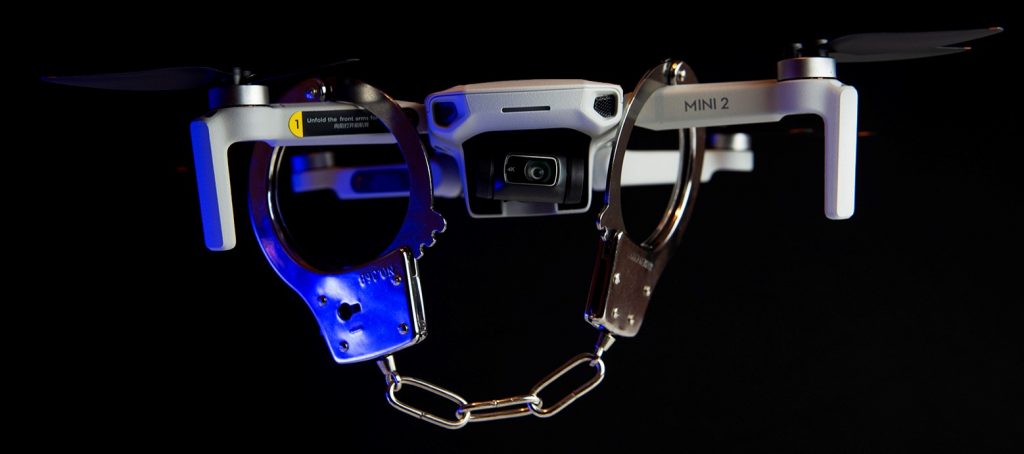About the UK Drone Law
Summary
The UK drone law changed on the first or January 2021 and is based on the laws of European Union. However, as the UK has left the EU the laws are slightly different. Most of the drone laws can be found in simple terms in the CAP 722 which is the legal document written by the Civil Aviation Authority (CAA) who are responsible for keep the UK Airspace safe.

These laws will dictate where and how different drones can fly. The laws have changed to be based on safety and risk and the only thing that is different between flying commercially and for fun is you have to have insurance when flying commercially.
The rules mainly separate drones by classifications which is larger decided by their weights.
The Drone Code (General rules)
The Drone code is a set of general rules that apply to all drones. While there are ways around certain rules with qualifications, but generally:
- You can not fly higher that 120 meters above ground – This is to avoid collisions with manned aircraft
- You must be able to see your drone at all times whilst in flight
- You must not fly more than 500 meters away from yourself
- You must not fly over a crowd
- You must not fly in Flight Restriction Zones without permission. This includes 5km from airports and other sensitive areas. You can find out where these are on the NATS Drone Assist App
You can see the entire drone code by clicking here.
Registration
There are two types of registration:
- Operator ID
- Flier ID
Operator ID – Owner and keeper
If you have a drone you will need to register yourself as a drone owner.
- The only exceptions to this is if you have a toy drone or sub 250 gram drone without a camera.
- Any drone over a 250 gram weight or any drone with a camera will need a registered owner. This applies to the Mini 2 as it has a camera even if it is less than 250 grams.
- The ID must be displayed on your drone.
- You can have more that one drone for each ID
- £9 per year
- You must be 18. (You can fly drones if you are younger, but you will need someone else to maintain your drone and get the Operator ID)
Get your operators ID here
Flier ID – the person flying the drone
If you have a drone over 250 grams you will need to register yourself as a remote pilot.
- Take a free 40 question multiple choice test with a pass mark of 30.
- Lasts for 5 years
- Only applies to drones over 250 grams (so you do not need one for your Mini 2 unless you add more weight to it)
- You must be 13 to get a Fliers ID (You will only be able to fly sub 250 gram drones like the Mini 2 if you are younger than 13)
Our advice would be to get a Fliers ID whether you need on or not. It’s free, easy to obtain and give you more knowledge if you are confronted by public or police. Get you Fliers ID here.
Where can you fly from?
You should gain land owner permission before you take off or land your drone from someone else’s property. You do not, however, need permission to fly over their land as airspace is a state asset. You do need to be careful not to invade privacy.
Privacy
If you fly too close to people whilst recording you are capturing their data. If you can identify them in any way you may be invading their privacy. The repercussions are worse if you are flying commercially. For more information about drones and privacy click here.
Categories (What drones fly where?)
There are three different groups called categories that give you different permissions to fly your drones.
Open Category
This category is open to every drone pilot with a drone less than 25kg regardless of qualifications. For this reason it is the most commonly used. Lighter drones have more freedoms than heavier drones. The problem with this is there are no classified drones yet, so all drones without classifications are called legacy drones, which have special permissions until the 31st December 2022. This is called the transition period. For detailed information on legacy drones click here.
Specific Category
The Specific Category is less to do with weight, but focuses on reducing risk by having deeper knowledge of flying and performing risk assessments. To fly in the Specific Category you will need a GVC qualification. Generally speaking it allows you to fly any drone less than 25kg 50 meters away from people. It also allows you to fly over people as long as you are 50 meters above them.
Certified Category
The Certified Category is for any drone that cannot fly in the Open or Specific Category. At them moment, any drones in this category will be treated as a light aircraft and you will need a pilots license to fly in it.
Insurance
The CAA recommend you buy drone insurance. You do not have to have it unless:
- You are flying commercially
- Your drone is 20kg or over